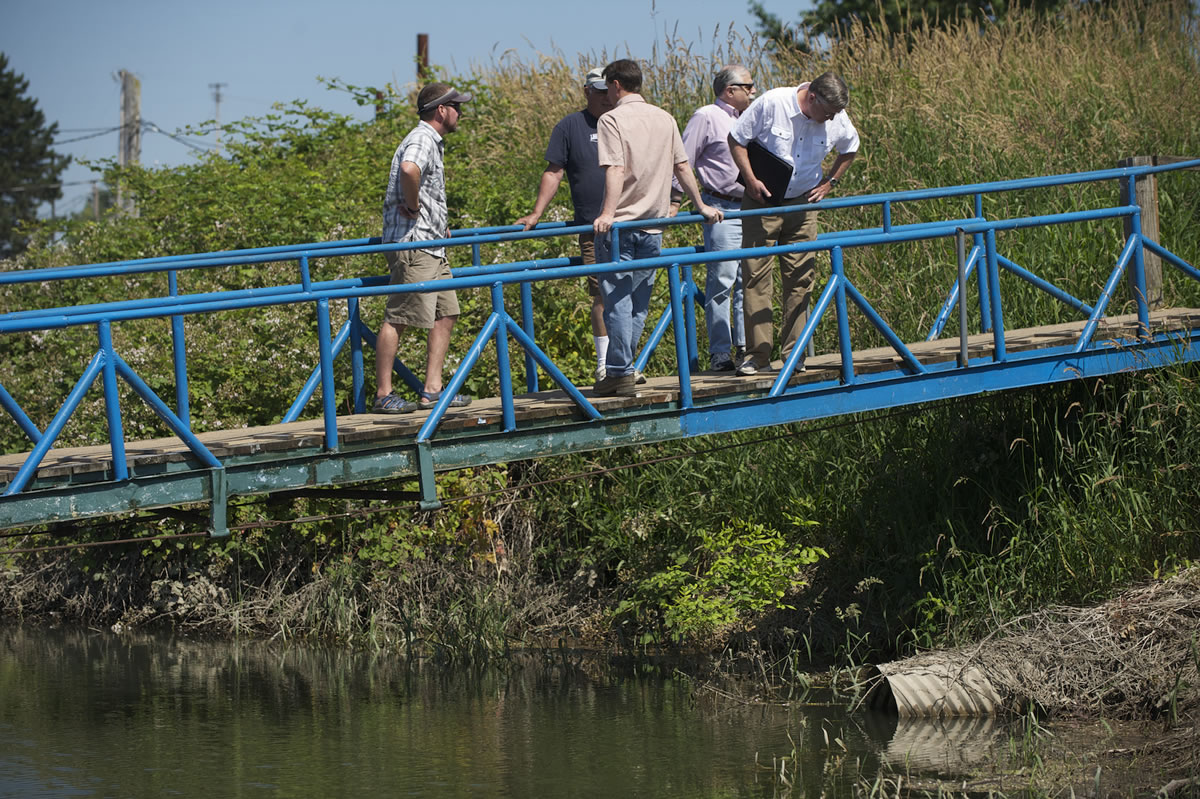• 68: Total hazardous cleanup sites listed in Clark County
• 4: Number of sites where work is categorized as complete
• 42: Number of sites categorized as cleanup started
• 22: Number of sites categorized as awaiting cleanup
• 50: Listed sites located in Vancouver
• 13: Listed sites directly related to Camp Bonneville
RIDGEFIELD — On the eastern shore of the Lake River, two adjacent properties tell contrasting stories of the state’s Toxics Cleanup Program.
Both first landed on the state’s hazardous sites list in 1996. Both earned the highest-priority ranking. But from there, the sites took dramatically different paths.
Pacific Wood Treating became one of the region’s most high-profile cleanup jobs, running up an estimated tab of $66 million as workers scrambled to remove harmful chemicals from soil and groundwater near the Ridgefield National Wildlife Refuge. The pollution was deposited over decades by a facility that closed in 1993, leaving a massive mess behind. But the state and the Port of Ridgefield — which owns the site — hope to have it mostly excavated and scrubbed clean by the end of this year.
Just to the south, the R.J. Frank property has seen no such urgency. Frank, the former owner, initiated an independent cleanup on land that once housed underground fuel tanks and some chemically treated lumber from next door. But he never formally detailed the work or its results. State officials never followed up. After more than 16 years on the hazardous sites list, it’s still classified as “awaiting cleanup.”




